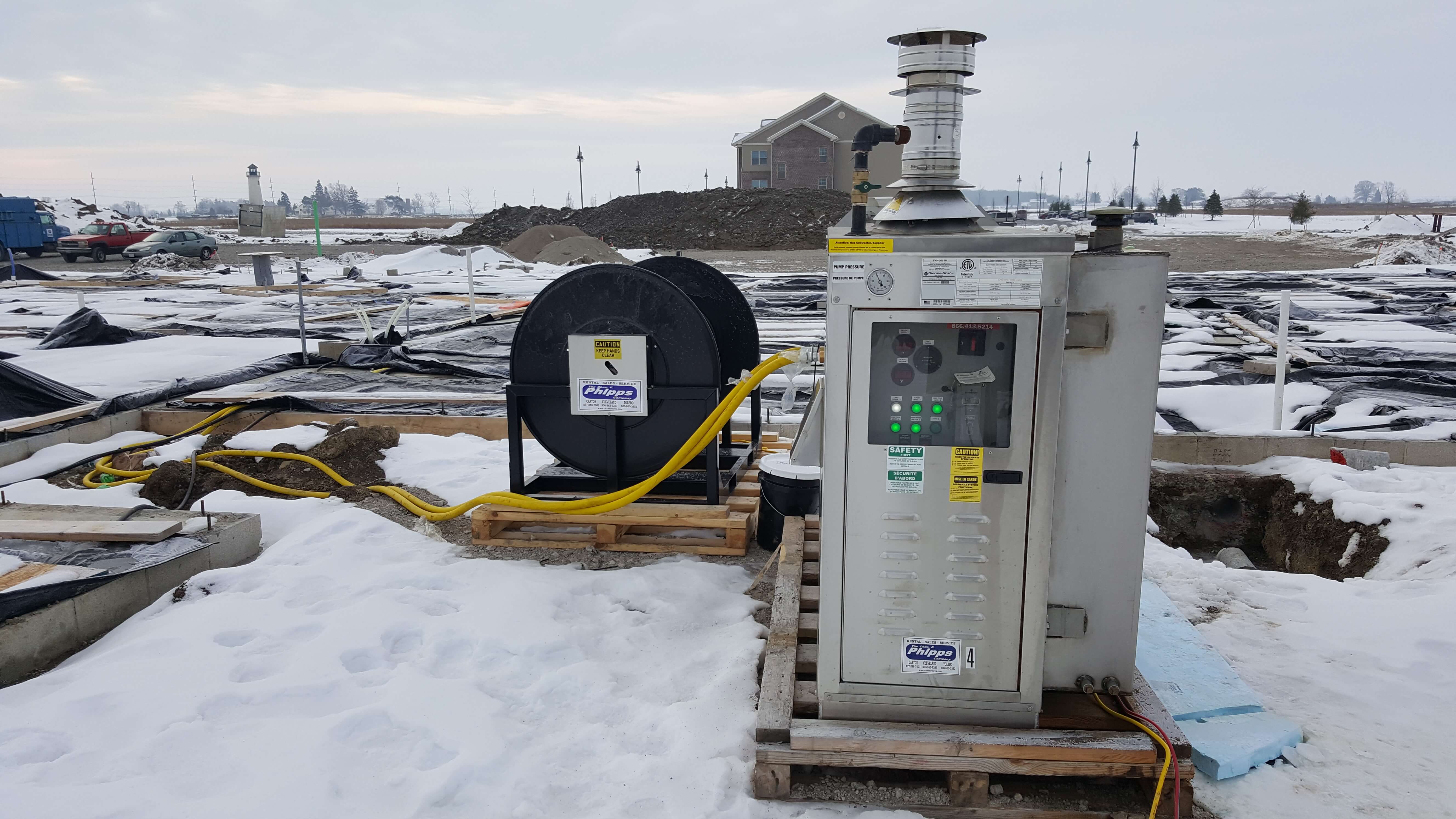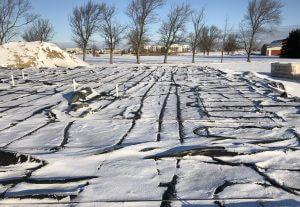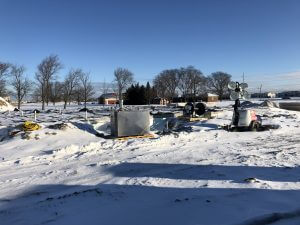Ground-thaw and Concrete Cure: Starting on a Solid Foundation
Posted by Matt Milos on Oct 17th 2018
 Why do we go to the trouble of using ground-thaw in the first place? In short: frozen ground. As the temperatures drop the water in soil freezes. The “frost line” goes deeper and deeper with time and continued low temperatures. How deep and how fast depends on time, temperature and insulation.
Why do we go to the trouble of using ground-thaw in the first place? In short: frozen ground. As the temperatures drop the water in soil freezes. The “frost line” goes deeper and deeper with time and continued low temperatures. How deep and how fast depends on time, temperature and insulation.
And why is that a problem?
Firstly, ground behaves differently when frozen or thawed. Frozen ground may expand and become uneven. Upon thawing, the ground settles, cracking the concrete and removing some of its subgrade support.
Secondly, cold ground means cold concrete. Cold concrete will either freeze (which damages the concrete) or set unevenly. Uneven setting can lead to crusting, with the top part of the concrete set and the bottom still soft. When your crew goes to power-trowel the result will be a wavy surface rather than a smooth one. Simply put, if you place concrete over frozen ground you should expect trouble down the line.

Keeping concrete warm is just as important as keeping personnel warm.
Even with suitably warm ground, without protection from the elements your concrete will still be in jeopardy.
Because curing concrete generates its own heat, the most common practice is to simply insulate that heat with concrete blankets. This is enough to ensure a quality pour in most cases, but if you are looking for a specific strength you need to consider other factors. The industry standard that should be on everyone’s shelf for this subject is ACI 306R-16: Guide to Cold Weather Concreting. Concrete Construction does a really nice job of summarizing the key points, but the main takeaway is that, regardless of pour conditions, concrete needs protection:
"Concrete work can be accomplished during even the coldest weather as long as the appropriate precautions are taken. The objectives are to prevent damage from early-age freezing (when the concrete is still saturated), to make sure the concrete develops the needed strength, and to limit rapid temperature changes or large temperature differentials that cause cracking. Although there is some cost to all this, it’s typically not excessive—certainly not when compared to having your crews sit idle, blowing your schedule, or ending up with damaged concrete.
Surfaces should be no more than 15° F colder than the concrete—but also no more than 10° F hotter than the concrete.
ACI 306 defines protection quite clearly: “Effective protection allows the concrete to gain strength at a normal rate and prevents the concrete from early-age damage by freezing of the mixing water.”

Without a suitably warm sub-grade, concrete will set unevenly.
Chemical makeup, depth, and surface area all play a part in how long you need to protect concrete.
Curing concrete starts producing less heat after three days. It follows, then, that the longer your "protection period," the more aggressive your insulation needs to be. Sometimes an enclosure or concrete blanket isn't enough to keep the concrete stable, which is where ground-thaw comes in.
Though we tend to use the term "ground-thaw" as a catch-all for our hydronic system, it actually serves two purposes.

Hydronic heat is perfect for both ground-thaw and concrete curing.
The hydronic hoses that warm your subgrade can also keep concrete at a stable temperature while it cures. Unlike inefficient direct- and indirect-fired units, this method does not require any enclosure, making it ideal for large areas and bridge decks where enclosing the pour area would be impractical. By heating the concrete without fumes, hydronic keeps your workers breathing easy and your concrete from becoming chalky.
That said, a full ground-thaw system isn't the solution for every job.
It may be unnecessary for pours in milder weather, and simple steps like placing hay over the pour location can help preserve ground heat up to a point. We recommend you consult the ACI 306R-16 to calculate what kind of insulation you need. If you're pouring in our bitter midwest winters, however, you will absolutely need heating for both ground-thaw and curing.

